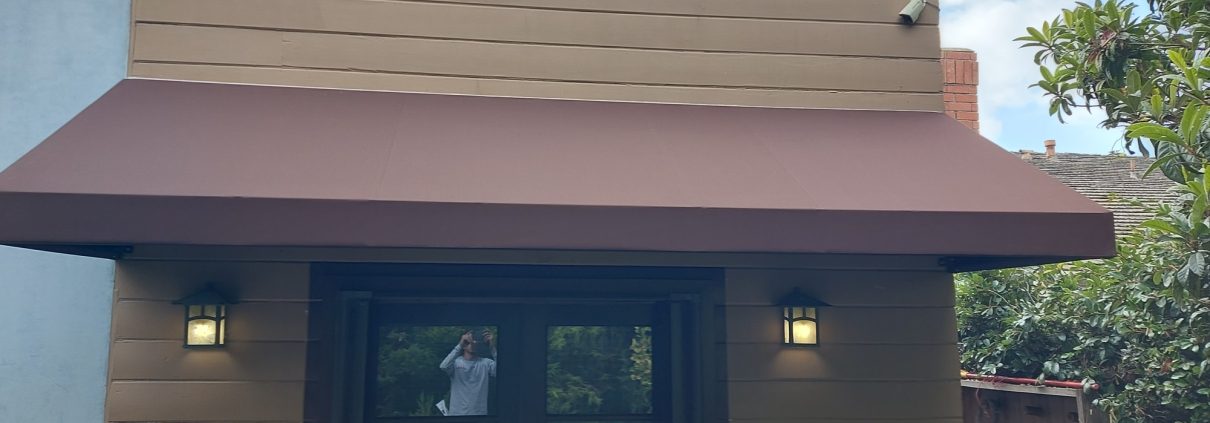Energy-Efficient Awnings: A Sustainable Solution for Comfort and Savings
In an era where energy efficiency and sustainability are becoming increasingly important, homeowners are constantly seeking ways to reduce energy consumption while maintaining comfort within their homes. One often-overlooked solution that offers both benefits is the installation of energy-efficient awnings. These versatile shading systems not only provide relief from the sun’s harsh rays but also contribute to significant energy savings. In this article, we’ll delve into the world of energy-efficient awnings, exploring how they work, their environmental advantages, and the financial benefits they offer.
Understanding Energy-Efficient Awnings
Energy-efficient awnings are outdoor shading systems designed to reduce solar heat gain, block harmful UV rays, and minimize heat transfer through windows and doors. They come in various styles, including retractable awnings, fixed awnings, and pergolas, each offering unique benefits and applications.
These shading solutions are typically made from materials that are highly effective at reflecting and absorbing solar radiation. Their primary function is to create a cooler and more comfortable environment in outdoor spaces like patios, decks, and porches, while also preventing heat from infiltrating your home’s interior.
How Energy-Efficient Awnings Work
Energy-efficient awnings work by intercepting and diffusing solar radiation before it reaches your windows or doors. Here’s a breakdown of their functioning:
- Solar Radiation Blocking: When the sun’s rays strike the surface of the awning, the material either reflects or absorbs the energy. High-quality awning fabrics are designed to reflect a significant portion of the sunlight, preventing it from entering your home.
- Shade Creation: The shaded area beneath the awning remains significantly cooler than the surrounding uncovered space. This shade not only keeps your outdoor area comfortable but also reduces the heat that can penetrate your home.
- Reducing Solar Heat Gain: By blocking direct sunlight, energy-efficient awnings minimize solar heat gain through windows and doors. This means less heat enters your home, reducing the workload on your air conditioning system.
- Enhancing Natural Ventilation: Awnings can also allow you to keep windows and doors open during mild weather, promoting natural ventilation and reducing the need for mechanical cooling.
- UV Protection: In addition to blocking heat, awnings also provide protection against harmful UV rays. This not only helps keep your interior furnishings from fading but also contributes to a healthier indoor environment.
Environmental Advantages of Energy-Efficient Awnings
Energy-efficient awnings offer several environmental benefits:
- Reduced Carbon Footprint: By reducing the demand for air conditioning and other cooling systems, awnings help lower your energy consumption and greenhouse gas emissions. This contributes to a smaller carbon footprint and a more sustainable lifestyle.
- Energy Conservation: Awnings promote responsible energy use by minimizing the need for mechanical cooling. This aligns with the broader goal of energy conservation and resource efficiency.
- Extended Building Lifespan: By protecting your home from excessive heat and UV radiation, awnings can extend the lifespan of your building materials and reduce the need for repairs or replacements.
- Lower Energy Production Demand: Less energy consumption means reduced demand on power plants and a decrease in the environmental impact associated with electricity generation.
Financial Benefits of Energy-Efficient Awnings
Energy-efficient awnings can provide homeowners with tangible financial benefits:
- Energy Savings: The most immediate financial advantage of energy-efficient awnings is the reduction in energy bills. By lowering cooling costs during hot seasons, you can potentially save hundreds of dollars annually.
- Increased Home Value: The installation of energy-efficient awnings can enhance your property’s value, making it more attractive to potential buyers if you decide to sell your home.
- Extended Appliance Lifespan: Reduced cooling demands can extend the lifespan of your air conditioning system, saving you money on maintenance and replacement costs.
- Tax Credits and Incentives: In some regions, you may be eligible for tax credits or incentives for installing energy-efficient shading systems. Check with your local government or utility company to see if such programs are available in your area.
Choosing the Right Energy-Efficient Awning
To make the most of the energy-saving benefits of awnings, consider the following factors when choosing the right one for your home:
- Orientation and Sun Angle: The positioning of your awning should align with the sun’s path during the hottest times of the day. South-facing windows, for example, benefit from awnings that block direct sunlight in the summer but allow it in during the winter.
- Material Selection: Opt for awning fabrics and materials that offer excellent solar reflectance and low thermal conductivity. Acrylic and Sunbrella fabrics, for instance, are known for their energy-efficient properties.
- Size and Projection: Ensure that your awning is appropriately sized to provide shade to the areas you want to protect. The right size and projection will maximize the cooling effect.
- Motorized or Manual Operation: Motorized awnings with automated controls can be programmed to extend and retract based on sunlight and temperature, maximizing energy savings. However, manual awnings may be more budget-friendly.
- Maintenance: Regular maintenance, such as cleaning and fabric care, is essential to ensure your awning continues to perform optimally.
- Professional Installation: Proper installation is critical for the effectiveness of energy-efficient awnings. It’s recommended to hire a professional awning installer to ensure correct positioning and secure attachment to your home.
Conclusion
Energy-efficient awnings are a smart and sustainable addition to any home, providing both environmental and financial benefits. By reducing solar heat gain, blocking harmful UV rays, and promoting energy conservation, these shading solutions contribute to a more comfortable and eco-friendly living space. When selecting an energy-efficient awning, consider factors like orientation, material selection, size, and professional installation to ensure you get the most out of this energy-saving investment. By harnessing the power of awnings, you can enjoy a more sustainable and cost-effective approach to keeping your home cool and comfortable.





